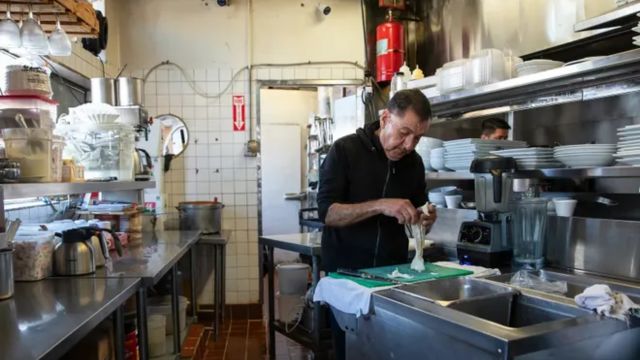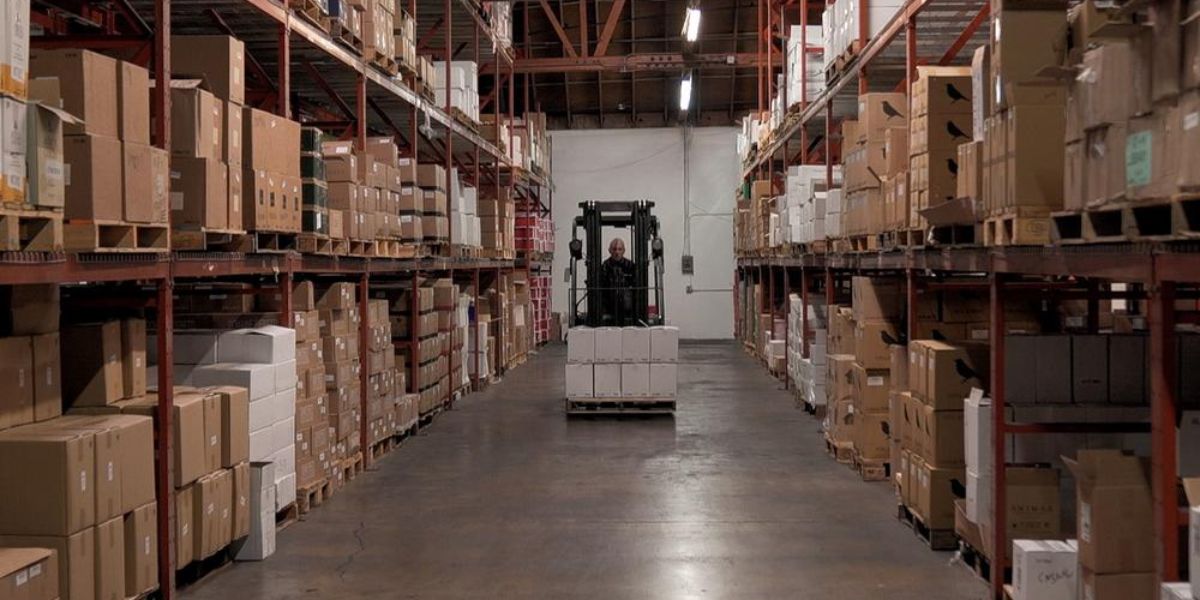The California Occupational Health and Safety (Cal/OSHA) Standards Board decided to put into effect regulations shielding indoor workers from intense heat on Thursday afternoon.
California is now one of just a few states—Oregon and Minnesota, among others—that offer protection to employees who work indoors in establishments like refineries, restaurants, and warehouses. According to the state, over 1.4 million people who work indoors in environments that might quickly turn dangerously hot would be affected by the new regulation.
The influence of heat on health is a serious public health concern, as evidenced by the observations made nationwide, according to Laura Stock, the head of the University of California, Berkeley’s Labor Occupational Health Program and a former member of the Cal/OSHA Standards Board. The necessity for this regulation was immediate. It’s consistent with California’s existing understanding that exposure to heat poses a serious risk to life.

Employers must now provide cool areas for employees to take breaks when inside temperatures reach 82 degrees Fahrenheit. They’ll have to alter how people operate above 87 degrees. This could entail moving work tasks to later hours of the day, for example, or employing air conditioning or fans to cool workstations.
According to Eric Berg, the deputy chief of health, research, and standards at Cal/OSHA, the rule might go into effect as early as August.
SEE MORE –
California Fast-Food Chains See Price Hikes, Drop in Customers Post $20 Minimum Wage, Study Reveals
According to Tim Shadix, legal director of the Warehouse Worker Resource Center, a worker advocacy organization with headquarters in Southern California, that is desperately needed for employees who are already dealing with extremely hot temperatures.
According to Shadix, “the worst workplaces we’ve seen are kind of like a tin can baking in the sun in the summer.” “We hope that before the end of the summer, there are no more delays and that employers and employees are aware of these new protections.”
All around the state in early June, temperatures broke records, with some inland regions—home to hundreds of warehouses—registering well over 100 degrees. In comparison to a world without human-caused climate change, June’s heat wave was longer, hotter, and 35 times more likely to occur, according to scientists from the World Weather Attribution group.
In the past, Sarah Fee worked in Southern California’s Inland Empire’s warehouses. During the summer, outdoor temperatures frequently reach the nineties or higher. In many cases, the temperature inside warehouses is just as high as it is outside.
“I would be completely queasy, my shirt would be drenched in perspiration, and I would leave work,” she recalls. “There wasn’t enough fans.”
A haphazard national patchwork of heat regulations. No national regulations shield employees from hazardous heat, whether they are working indoors or outside.
Under the federal Occupational Health and Safety Administration’s General Duty clause, employers are required to provide workplaces that are “free from recognized hazards,” including heat. However, worker advocates point out that the guidelines on heat-specific risk are difficult to enforce and have not been used frequently.
Without strong federal regulations, certain cities, such as Phoenix, Arizona, and five states, such as Oregon, Washington, and Minnesota, have established their own laws granting outdoor workers, such as farmworkers or construction workers, the right to water breaks and access to shade during extreme heat waves.
However, some have specifically forbidden certain regulations. Miami-Dade County, Florida, was about to propose a local ordinance to address the risk of heat exhaustion for workers who work outside earlier this year. Governor Ron DeSantis did, however, approve a state bill prohibiting counties or localities from enacting their own heat regulations.
A nationwide heat rule that would safeguard workers indoors and out is being developed by OSHA, but it may take years to complete. Recently, a draft was forwarded to the White House for assessment.
Jill Rosenthal, the director of public health policy at the Center for American Progress, describes California’s approval of the indoor heat restriction as “a really an important step, and a signal to other states and employers that this is really something to pay attention to.” “We hope to see more states adopt these kinds of policies, again for economic as well as health reasons.”
Meanwhile, heat exposure is causing injuries and occasionally fatalities to workers in California and other states.
The journey to guard against indoor heat
Legislators in California enacted a bill in 2016 that tasked Cal/OSHA with developing a rule to shield indoor workers from heat exposure. This law was intended to be a companion to the state’s 2005 outdoor worker protection statute.
The rule was scheduled to be created by the state by 2019, but for years, disagreements over its parameters delayed the rule’s development. The disputes included which industries would be covered by the regulations, what would happen when a specific temperature was reached, and which enterprises would have to actively cool overheated workplaces.
Earlier this year, the rule’s final text was decided upon. The California Department of Finance expressed concerns to the standards board the night before the vote regarding the cost to the state of complying with the rule, specifically regarding the effort needed to bring the California Department of Corrections and Rehabilitation (CDCR) into compliance.
The standards board was scheduled to vote on the rule in March 2024. Across the state, the agency manages over thirty adult state-owned institutions, the majority of which use evaporative coolers or fans rather than air conditioning.
Board members took a symbolic vote to accept the rule despite their irritation with the last-minute delay during the meeting in March.
CDCR is no longer included in the amended regulation that was approved on Thursday. In order to address the safety of those workers, the Standards Board said it will work on creating a different pathway. However, AnaStacia Nicol Wright of WorkSafe, a worker rights organization, is concerned that the lengthy procedure may endanger thousands of workers and convicts for at least one more summer.
She declared during the conference that “under the California labor code, incarcerated workers are also employees.” “These workers work in often antiquated, poorly ventilated buildings with little protection from temperatures, putting them at risk for heat exhaustion and dehydration.”
Still, certain corporate groups disagree with several aspects of the regulation. The California Chamber of Commerce’s Rob Moutrie pointed out that a lot of small companies who lease their space don’t own their own infrastructure, which makes it challenging or impossible to offer the cool-down areas that the new law mandates.
The California Farm Bureau’s Bryan Little, the director of labor affairs, noted that his organization and Corrections shared similar worries around the possibly exorbitant expenses associated with implementing and utilizing “engineering controls,” like as air conditioning, to cool workplaces. He remarked in the meeting, “As an employer advocate, I wonder what it takes to get heard.”
By late summer, the regulation may be implemented. According to Stock, the sooner, the better.
She states, “I think it’s really evident how urgent this is.” “Climate change is only making the exposure worse, and the temperature is rising for longer periods of time.”
